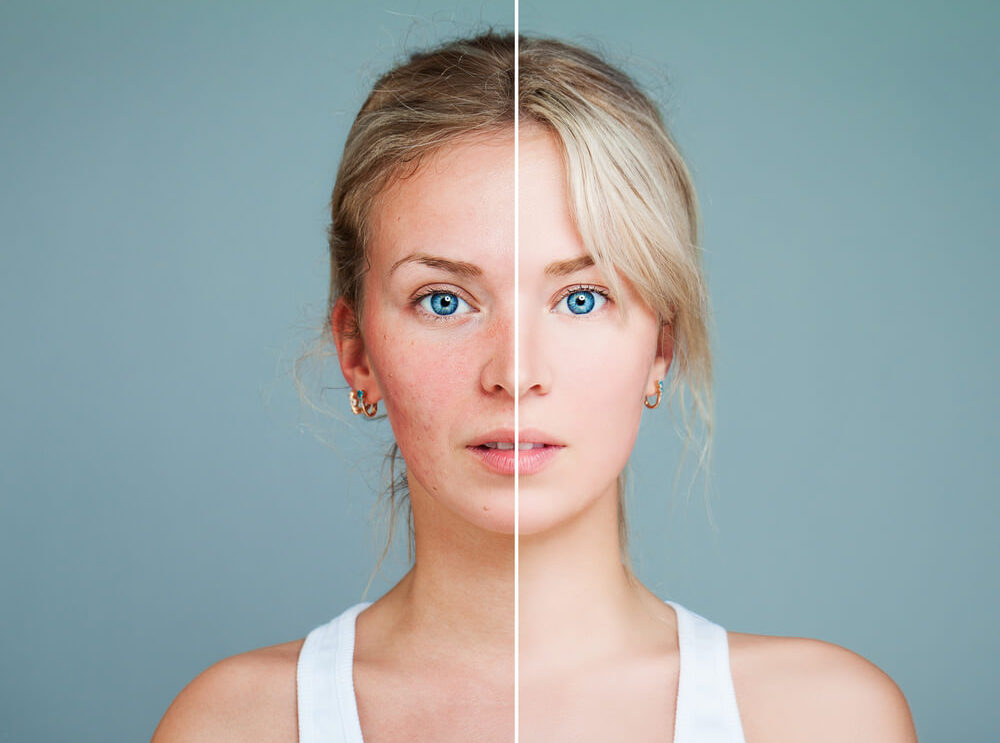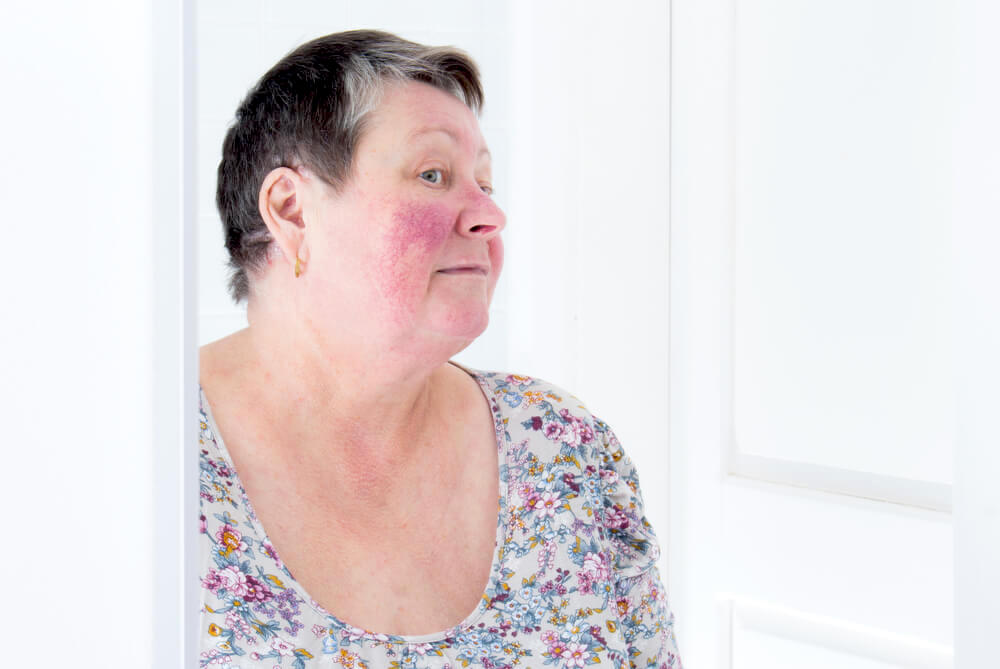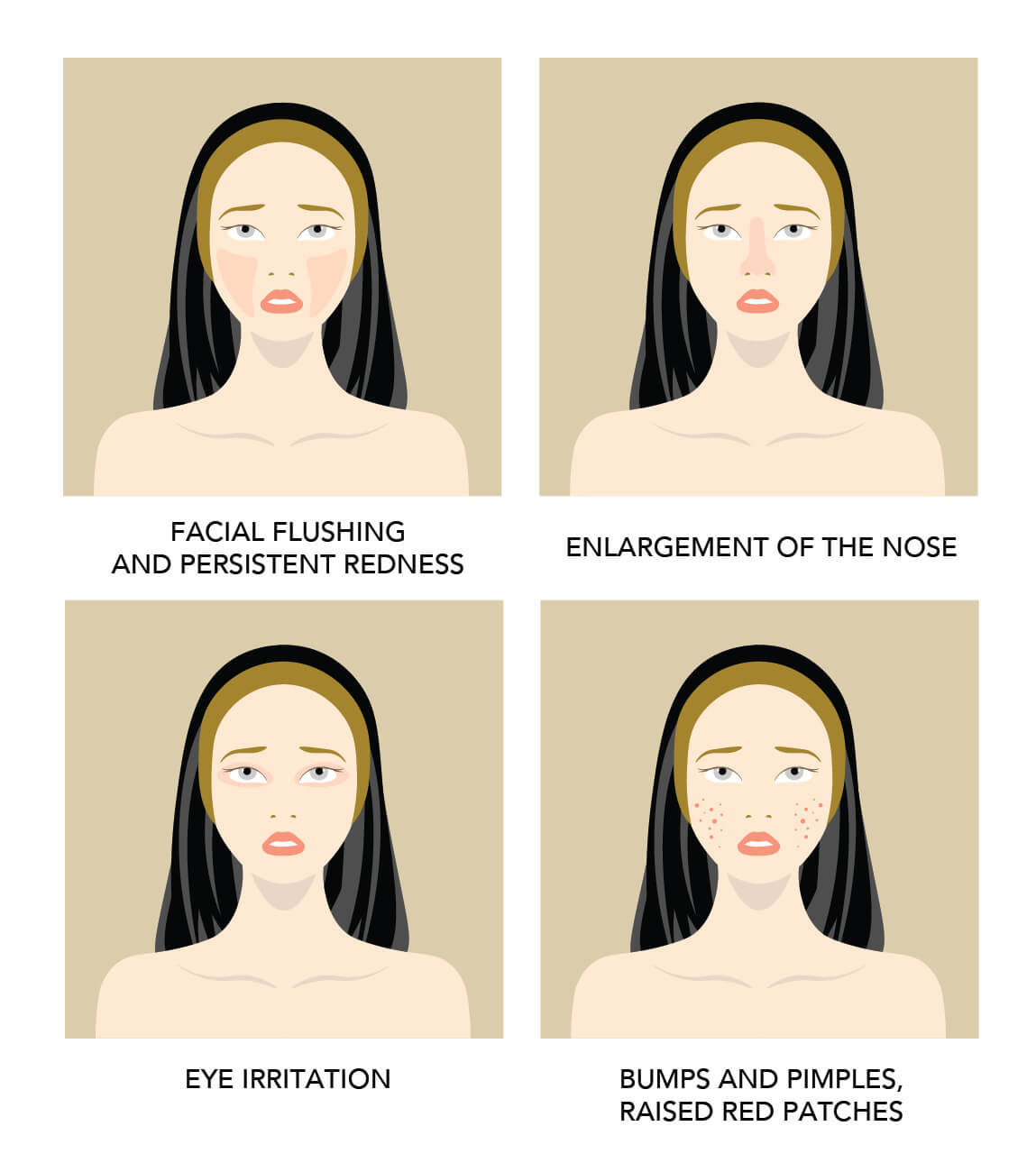Your Guide to Rosacea – Mild, Moderate and Severe

Many people have never heard of rosacea, but this chronic skin condition is actually surprisingly common, affecting around 16 million people in the United States alone. Whether your rosacea has just been diagnosed, or you have been battling with severe rosacea for years, this guide will help you to understand the condition better, while giving you the knowledge that you need to soothe your skin.
What Exactly Is Rosacea?
Rosacea is an inflammatory skin condition that primarily affects the face. Being a chronic disorder, rosacea will return time and time again, although it could be months, or even years, before the next flare-up.
Rosacea cases vary significantly in severity, with some being so mild that people do not even realize they have it, while others so severe that it can really affect an individual’s quality of life.
Wondering how likely it is that you may have rosacea?
The condition tends to occur most commonly in people of Scandinavian, Welsh, Scottish, or Eastern European descent, and usually shows up between the ages of 20 and 70. While it does seem to affect those with fairer skin more, cases have been diagnosed in African-Americans and Asians, and women seem to be far more susceptible to it than men.
Rosacea Types and Symptoms
There are actually four different types of rosacea, and the type, or types, that you have will determine your symptoms.
Erythematotelangiectatic Roseacea
This the first type of rosacea, and the symptoms from this usually include facial redness, flushing and the appearance of visible blood vessels around the face.

This is quite a mild form of rosacea, with the symptoms not being too severe, and, with basic treatment, can be managed relatively easy. Quite often, this form of rosacea is triggered by certain lifestyle choices, which will be explained in more detail below.
Papulopustular Rosacea
This is the second type of rosacea, and is often also referred to as acne rosacea. However, this name is extremely misleading, because while the symptoms for this type of rosacea may resemble acne, the two conditions are actually completely different. For example, those with acne will have blackheads or whiteheads, which are also known as comedones, whereas those with rosacea will not.
There are a few of the symptoms that you are likely to experience if you suffer from this form of rosacea:
- Inflamed, red skin with regular breakouts
- Exacerbated oiliness
- Visible broken blood vessels
- Irritated, sensitive skin with raised red patches
This is a mild to moderate form of rosacea, and can usually be managed relatively easily.
Phymatous Rosacea
This is the third form of rosacea, and is a type that advances quite quickly, meaning that the symptoms will increase in severity as time goes on.
The symptoms are quite specific, and tend to include thickened skin, as well as an enlargement of the nose and nostrils. Your skin may also look quite red and bumpy. This form of rosacea tends to be more severe for men than women.
Treatment can be quite difficult for this type of rosacea, and, in severe cases, surgery may be needed. However, this is still not a cure for the condition, and merely minimizes some of the symptoms.
Ocular Rosacea
Here is the final form of rosacea, and usually affects the eyes, as well as the area around them. While the initial symptoms for ocular rosacea may be redness and flushing, these are a few of the other symptoms that are likely to develop:
- Dry and itchy eyes
- A burning sensation in the eyes
- Blurred vision
- Sensitivity to light
- Red, inflamed eyelids
- Excessive tearing
- Dilated blood vessels in the whites of the eyes
For those who experience minor forms of ocular rosacea, warm compresses and eyelid scrubs are often the only treatment that is needed.
Why?
Because these stimulate the glands to continue working correctly, therefore minimizing the symptoms.
Trying to work out which form of rosacea you have?
Keep in mind that it is extremely common for people to experience more than one form of rosacea at the same time, so if you are experiencing symptoms from two or more types, this could be the reason why.

Rosacea Treatment Options
Whether your rosacea is mild or severe, you should always speak to a professional before deciding on treatment options. Your treatment options do also depend on the type of rosacea that you have.
That being said, these are a few of the treatment options that are most commonly recommended for rosacea sufferers:
- Antibiotics – Antibiotics are the most common treatment for rosacea, and usually come in the form of topical creams and gels. However, there are also oral prescription drugs that can be taken for the condition, usually once or twice a day. When treating rosacea with antibiotics, most people tend to notice improvements within the first couple of months.
- Beta-blockers and alpha antagonists – These types of medications are usually used to treat heart disease and high blood pressure, but can also help with rosacea too. However, the FDA has not approved the use of these drugs for rosacea, so it may be difficult finding a doctor to prescribe them for you.
- Estrogen – Rosacea flare-ups are often triggered by menopause, and, when this is the case, small doses of estrogen can help to minimize the symptoms. However, this should only be taken as a short-term treatment.
- Laser Treatment – Laser treatment can be used to help with rosacea symptoms in two ways. Firstly, this is an effective way of treating damaged blood vessels that lie underneath the skin, enabling them to be absorbed into the body so that they are no longer visible. Laser treatment can also help to remove excess nose tissue for those who suffer from phymatous rosacea.
- Surgery – Surgery tends to be an option most commonly used for phymatous rosacea, which affects the shape of the nose. Surgery can de-bulk the area, removing any distorted tissue that has built up under the surface of the skin, while re-contouring the overall shape.
While these treatment options may be quite effective, nothing quite beats being able to prevent a rosacea flare-up from occurring in the first place…
Preventing Flare-Ups
There are so many different rosacea triggers out there, and these all affect people in different ways. Nevertheless, there are still a number of steps that you can take to avoid these triggers and minimize the frequency, and intensity, of your rosacea flare-ups.
Sun Protection
Exposure to sunlight, and its damaging UV rays, is one of the most common rosacea triggers out there, and can really exacerbate symptoms.
In order to protect your skin from this, sun protection is absolutely vital. Try to look for a sunscreen that contains an SPF of at least 30, and opt for a formula that does not contain any alcohol, as this will only make your symptoms even worse.
Have you found that sun protection does not seem to really help you?
Then you may need to take things a step further and try to completely avoid the sun during its hottest hours, which are usually between 11am and 3pm, depending on where you live. Make sure that your clothing is also able to protect you from the sun, and invest in a few sun protecting accessories, such as sun hats and sunglasses.
An Effective Skin Care Routine
Rosacea usually causes rough, dry and scaly skin, which is why an effective skin care routine is essential in order to maintain a healthy complexion.
Since your skin will likely be quite sensitive, you need to ensure that you are only using the mildest and gentlest of products, staying away from any harsh ingredients.
Here is a simple skin care routine that you can follow:
- Cleanse with a non-soap cleanser and lukewarm water, using just your fingertips
- Use a natural toner to rebalance your skin’s pH levels, such as rose water
- Use a serum or a spot treatment to target specific problem areas
- Finish off with a thick layer of a nourishing, hydrating moisturizer, as this will help to strengthen your skin’s natural barrier, preventing the growth of bacteria and improving its overall health
Curious about retinoids?
Retinoids are famous for being one of the most effective anti-aging ingredients out there, but they can also be used to help with rosacea.
How?
Retinoids are great for repairing damaged skin cells, while reducing scarring and skin lesions, even those that have been caused by rosacea. Keep in mind that retinol can be quite harsh, so start off slowly with small amounts, gradually increasing this if your skin is able to tolerate it.
Other Common Rosacea Triggers
There are several other common rosacea triggers out there. These include:
- Hot beverages
- Alcohol
- Stress
- Spicy Foods
- Extreme heat or cold
- High humidity
- A sudden change in emotion
- Certain medications, such as blood pressure drugs and some opiate painkillers
- Menopause
- Hot baths and saunas
- Exercise
As you can see, some of these, such as alcohol, hot beverages and spicy foods, can be avoided quite easily.

Stress is also another one that can be controlled, because while you may not be able to completely prevent yourself from becoming stressed, there are many stress management techniques that you can practice to quickly lower your stress levels back down.
Of course, there are some rosacea triggers that could actually be detrimental to your overall health if you were to avoid them, with exercise being the main one. Rather than totally giving up on working out, follow these tips instead to help ensure that your workouts do not exacerbate your rosacea:
- Swap your long routine for shorter sessions
- Opt for low-intensity workouts instead of demanding routines
- Keep your skin and body cool with a fan or air conditioning
- Do not exercise outdoors if it is too hot
- Drink plenty of water, and cover your face with a cool cloth once your workout is over
Identifying Your Individual Rosacea Triggers
Since everybody experiences different triggers when it comes to rosacea, it is important for you to take the time to work out what your own individual triggers are.
The quickest way to do this is by using a notebook to track your daily lifestyle habits, from the foods and drinks that you consume to the skin care products you use to the weather that you have been exposed to. You should also jot down each of your symptoms, as well as their severity, doing this for about a month.
Want to make things even easier?
Head on over to the National Rosacea Society website, where you will find a Rosacea Diary Booklet that you can download and then print out.
The National Rosacea Society recommends that people fill in this form every day for two weeks, after which you should be able to identify your main triggers.
A Quick Fix with Makeup
For those who only experience mild forms of rosacea, makeup is an easy option when it comes to temporarily hiding symptoms. However, you should not turn to this too often, as it could potentially make your symptoms even worse.
Wondering exactly how to hide the redness and flushing?
Begin by using a green-tinted concealer, as this will counter the redness, and top this off with a flesh-colored foundation.
You should also make sure that the makeup products that you use do not contain the following ingredients, as they will only exacerbate symptoms:
- Alcohol
- Peppermint and Menthol
- Clove Oil
- Hazel Oil
- Eucalyptus Oil
- Salicylic Acid
There is no denying that dealing with rosacea can be extremely frustrating, especially if you are still working out which treatment options have an effect on your skin. However, once you have identified your triggers, and have a few go-to treatment options, you will find that your rosacea becomes much easier to manage, and will not have such an impact on your quality of life.

